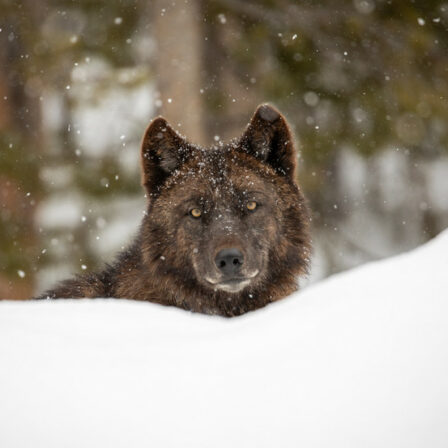President and CEO, Defenders of Wildlife
When skeptics of the Endangered Species Act ask me, as a professional biologist, what “good” is some obscure endangered mollusk, amphibian, or plant, I often think back on the great words of the19th century poet, Ralph Waldo Emerson, who once said, “What is a weed? A plant whose virtues have never been discovered.” The virtues of those obscure species may not be well known or understood by humans, but that doesn’t mean that they shouldn’t exist and be preserved and protected.
While many species still remain a mystery, there are myriad others that are beloved and celebrated. Each winter, people gather in Sauk City, Wisconsin, during January to see the abundance of bald eagles that gather on the banks of the Mississippi River. The city is just one of hundreds nationwide that host festivals, tours, and more to watch expanding populations of our national bird. Off the coast of California, ecotourism guides lead wildlife lovers in search of sea otters at play in the ocean, and in Massachusetts, tourists head out in boats to watch whales migrating through the Atlantic waters. In Tennessee, biologists are working hard to recover freshwater mussels that help filter impurities out of streams and rivers. And scientists are continuously exploring the medicinal value of imperiled amphibians, plants, and other species.[pullquote]The Endangered Species Act is the strongest federal environmental law on our books today. It has done more to conserve imperiled species, to transform the management of wildlife at the state level, and to modify federal agency behavior than any other national environmental law.[/pullquote]
What do these creatures all have in common? They have all been protected by the Endangered Species Act—a law that was put in motion December 28, 1973, and is soon to reach its fortieth anniversary.
President Richard Nixon signed the act into law stating, “Nothing is more priceless and more worthy of preservation than the rich array of animal life with which our country has been blessed. It is a many-faceted treasure, of value to scholars, scientists, and nature lovers alike, and it forms a vital part of the heritage we all share as Americans.” Thanks, Mr. President, I could not have said it better!
Protecting imperiled wildlife from extinction not only makes good biological sense, but economic sense, as well. Many endangered species contribute to the maintenance of vital ecological services such as clean water, balanced ecosystems, and abundant natural resources. Other protected species produce beneficial medicines and maintain booming wildlife-related recreation and tourism. And then there are listed species whose ecological or economic contributions are not yet fully appreciated or understood, but whose loss would be irretrievable, nonetheless.
With fewer than 1 percent of the species protected under the Endangered Species Act ever having been delisted due to extinction, the Act has been incredibly effective. Our country would look a lot different if we had not committed to the protections provided by this landmark legislation almost forty years ago. Bald eagles would no longer be numerous along our shorelines, peregrine falcons would likely have vanished, grizzly bears and wolves would be missing from western landscapes, bull trout would no longer be swimming in our streams, and black-footed ferrets would have vanished from the prairies.
The Endangered Species Act is the strongest federal environmental law on our books today. It has done more to conserve imperiled species, to transform the management of wildlife at the state level, and to modify federal agency behavior than any other national environmental law.
The Act provides a solid foundation not only for preventing extinction, but for steadily improving the conservation prospects for the seriously imperiled species it protects. The Act compels us to care about the future of our planet and provides a platform to ensure that we are mindful of our responsibilities to future generations.
But today, our wildlife and natural resources are up against some extreme challenges. Accelerating climate change, invasive species, and habitat destruction and development—along with intense pressures to increase energy production—are among emerging threats to imperiled species. But none of these threats are as great as the opposition to the law from extreme anti-environmental politicians. At times, the political fate and welfare of the Endangered Species Act seems as uncertain as that of some of the species it so effectively shields.
My son Carson once gave me a drawing of a polar bear that I hung in my office near my desk. He wrote at the top, “Please save the polar bears mom!” He meant it. It’s time for us to mean it, too. Carson and all of the other young people in this country are counting on us to ensure that the world we leave behind is as good—or better—as the one that my generation inherited. Let’s put politics aside, as they did forty years ago, and recommit to a strong and successful Endangered Species Act that saves this nation’s imperiled wildlife and plant heritage once and for all.
This essay was originally published in the Huffington Post


